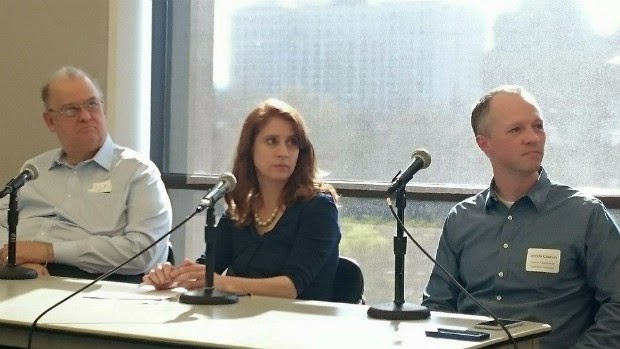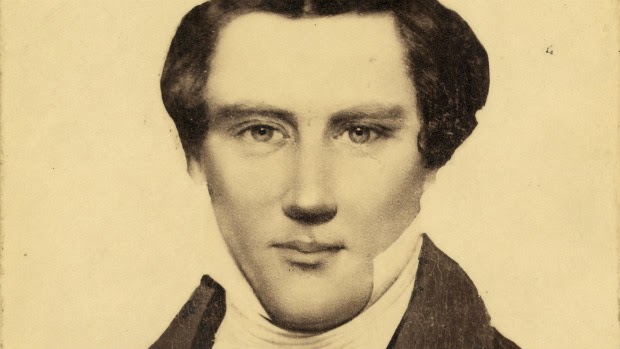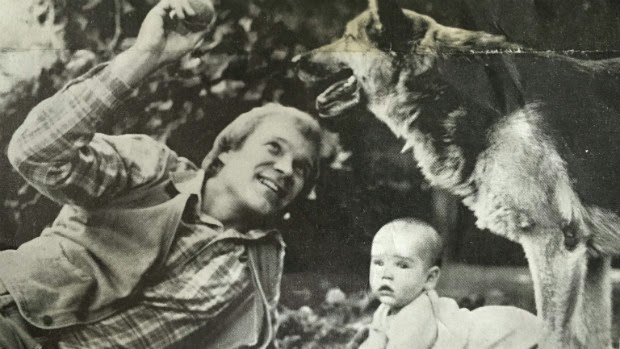Myths and Visions of Mormon Transhumanists
4 April 2015 (updated 25 June 2021)

This is a transcript of my talk at the 2015 Conference of the Mormon Transhumanist Association, held yesterday in the Salt Lake City Public Library. The conference attracted about 75 attendees in person, and about 900 visitors to the live stream on Transfigurism.org. Keynote speakers were Ralph Merkle and Kristine Haglund, and many family members and friends were in attendance. I’m interested in your feedback on my talk, so please do comment. Thanks!
We live in challenging times. Rapidly changing and decentralizing technology is stretching traditional cultures and disrupting social norms. Religious fundamentalists are globalizing escapist and nihilistic doctrines, stifling aspiration with oppressive theologies, and gathering recruits to violent causes. At the same time, anti-religious zealots are canonizing reductionist esthetics and making a fetish of small-minded ridicule that would shame the pure in heart away from our greatest hopes.
In particular, this is a time of crisis for Mormonism. For evidence of that, we don’t have to look any further than the titles of articles recently published by the LDS Church: “Are Mormons Christian?”, “Book of Mormon and DNA Studies”, “Book of Mormon Translation”, “First Vision Accounts”, “Peace and Violence among 19th Century Latter-day Saints”, “Plural Marriage in the Church”, “Race and the Priesthood”, “Translation and Historicity of the Book of Abraham”.
Of course, that’s not all the evidence of crisis. Attrition rates seem to have increased, especially in developed countries among young Mormons, disillusioned by a neo-orthodox focus on dogma and politics. We’ve also seen the LDS Church excommunicate two high profile Mormons, Kate Kelly and John Dehlin, who’ve been associated in popular consciousness with feminist and gay rights, thereby escalating tensions among Mormons with differing views on these subjects. And much of progressive Mormonism, for its part, has exhibited little more than all-too-predictable politics of its own, and so functions more as a secularizing anemia than as a force for renewed strength.
So here we are. Many, perhaps most of us, find around us or in ourselves an increasing discomfort. We might sense real risk for our people – for our culture, our heritage, and family. We might feel our grip less trustworthy or our footing not so sure. And yet our love, or at least an instinct for self-preservation, still brought us together today, perhaps hoping for that “Hail Mary” pass to redemption of our shared history, Mormon and otherwise, in a beautiful future.

Transhumanism is a new way to think about the future of humanity. As Transhumanists, we’ve discarded the old assumption that human nature is or ever was static, not only because science has demonstrated biological evolution, but especially because history itself is cultural and technological evolution. We’re diverse in background and perspective, but our common expectation is that humanity will continue to evolve. Our common ambition is to shape that evolution intentionally, changing our bodies and minds, our relationships, and our world for the better – perhaps even to learn, love, and create together indefinitely.
Some have accused Transhumanism of being the most dangerous idea. The risks truly are as horrible as the opportunities are wonderful. Even acknowledging concerns and emphasizing ethics, we might agree with our critics that we’re trying to play God. After all, what are the alternatives? What are the prospects for children that wouldn’t try to play adult? That wouldn’t grow from trying to learning? Wouldn’t mature from playing to being? Surely that nursery will prove too small, even for the smallest of the living. But for us, who know we’re not dead as yet, why not believe the most dangerous idea? Why not live?
Whatever the secular response, perhaps properly excusing itself from vying for the high spirit of humanity, the Mormon Transhumanist response is a quickened heart and brightened eyes. We’ve heard this story before. It’s our calling and our choice hasn’t changed. Children of God would try to play God, and more. We’d learn how to be God. Dangerous indeed, and worthy of exquisite caution and utmost reverence. But for the child, there’s no other way. Mormon Transhumanism stands for the idea that humanity should learn how to be God, and not just any kind of god, not a god that would raise itself in hubris above others, but rather the God that would raise each other together as compassionate creators. Humanity should learn how to be Christ.
Although most Transhumanists are secular, Transhumanism originates at least in part from religious Humanism. For example, New Testament writers and centuries of early Orthodox and Catholic authorities syncretized with Neoplatonism, the popular science of their day, and many advocated identifying with Christ and becoming Gods. Thirteenth-century Scholastic theologians continued the synthesis of Christianity with popular science, which was at the time the newly rediscovered ideas of Aristotle. Nineteenth-century Nikolai Fyodorov, a Russian Orthodox priest, proclaimed that the common task of humanity should be the technological resurrection of our ancestors. And a twentieth-century Jesuit priest, Pierre Teilhard de Chardin, advocated a vision of human evolution, accelerated by technology, and moving inexorably toward merging with a conception of God.
Mormonism itself is a religious Transhumanism, expressed as an immersive discipleship of Jesus Christ. Not so much a religion about Jesus, it’s an aspiration to live the religion of Jesus. With Jesus, we’d trust in, change toward, and fully immerse our bodies and minds in the role of Christ. We’d be messiahs, saviors for each other, consoling and healing and raising, as exemplified and invited by Jesus. We’d also endure in that role, working to reconcile or atone with our relations and world, through suffering and even death if needed, anticipating the prophesied day of transfiguration and resurrection to immortality in eternal life.
Mormon Transhumanists have many myths and visions – many stories and dreams. And we express them in many narratives. I’d like to share some with you. They’re informed of an abiding love for Mormonism, deep hope in an ecumenical Christianity, substantial research in emerging technology and its trends, as well as some imagination about how it might all tie together. Some of the narratives may be shocking, which is partly the point of constructing them, aiming to press us beyond casual consideration. And of course the only thing certain about the myth is that it’s wrong to some extent, but perhaps the vision will provoke your own imagination to improve on its deficiencies.
Without beginning, Gods of Gods found themselves creating heavens and worlds without end. Our world was formless and empty, having neither happiness nor misery, neither life nor death, neither sense nor insensibility, and no purpose. Darkness encompassed the source, and the Mind of the Gods was brooding over it. And the Gods said, let there be light, and there was light. The Gods saw the light, that it was good because it was discernible. The Gods saw darkness, that it was separated from the light. And the light shining out of darkness was the first category.
The Gods counseled among themselves. And some said, let’s prepare the source to evolve abundantly, to bring forth sense, and life, and happiness; and form creators in our image, after our likeness, to have dominion over all the world. And others answered and said, let’s not evolve more creators because some will be lost, but give us the honor and power. The Gods chose the first, and there was war in heaven. But the Gods watched those things they had ordered, and saw their plan was good.
Two thousand five hundred years ago, humanity was evolving into a new way of thinking, expressed in part by transition away from polytheism. Zarathustra’s teachings had spread throughout most of the civilized world, and the Persian Empire governed nearly half of humanity. In the heart of the empire, a small religion was coming together. Its adherents combined Zoroastrian doctrine with mythology about indigenous Semites to make new scripture. They pioneered from Babylon, established a colony in Judea, and began to build a temple. In time, they would syncretize with Greek philosophy, and give birth to the most influential religion in history: Christianity.
Two hundred years ago, humanity was again evolving into a new way of thinking, expressed in part by transition away from monotheism. Jesus’ teachings had spread throughout most of the civilized world, and the United States of America was ascending to unparalleled global influence. In the heart of the nation, a small religion was coming together. Its adherents combined Christian doctrine with mythology about native Americans to make new scripture. They pioneered from Illinois, established a colony in Deseret, and began to build a temple.
Today, we live in a telestial glory, an adolescent civilization in the Fullness of Times. Filled as if by an unstoppable rolling river pouring from the heavens, our knowledge becomes unprecedented. Nothing is withheld, whether the laws of the earth or the bounds of the heavens, whether there be one God or many Gods, everything begins to manifest. And the work of God hastens. Repeating the words of Christ, we speak, and information technologies begin to carry consolation around the world. Emulating the works of Christ, we act, and biological technologies begin to make the blind see, the lame walk, and the deaf hear; agriculture begins to feed the hungry; and manufacturing begins to clothe the naked. Hearts turning to our ancestors, we remember them, and machine learning algorithms begin to process massive family history databases, perhaps to redeem our dead.
A biotech revolution begins. Synthetic biology restores extinct species, creates new life forms, and hints at programmable ecologies. Some recall prophecies about renewal of our world – or perhaps its destruction. Personalized medicine begins to restore vitality to an older generation. Some insist that death is necessary for meaning, but new voices repeat old stories about those who were more blessed for their desire to avoid death altogether. Reproduction technology enables infertile and gay couples, as well as individuals and groups, to conceive their own genetic children. Some recoil from threats to tradition, while others celebrate gifts to new families. Weaponized pathogens threaten pandemics, as well as targeted genocides and assassinations. Meanwhile, solar energy becomes less expensive than any other. And the Internet evolves into a distributed reputation network, creating new incentives for cooperation. Missionaries find their work more globalized than ever before.
A nanotech revolution begins. Atomically-precise printing erupts with food, clothing, and shelter. Welfare systems solve old problems and make new ones. Among the wealthy, robotic cells flow through bodies and brains, extending abilities beyond those of the greatest athletes and scholars of history. Enjoying restored vitality, many become convinced that we can vanquish that awful monster, death. But cautionary voices call attention to stunning socioeconomic disparities. With the ability to read and write data in every neuron of the brain, the Internet evolves into a composite of virtual and natural realities. We begin to connect with each other experientially, sharing senses and feelings. Spiritual experiences become malleable, meriting careful discernment. Wireheading haunts relationships and burdens communities. And weaponized self-replicating nanobots threaten destruction of the biosphere. Meanwhile, robotic moon bases mine asteroids and construct space colonies, reinvigorating the pioneer spirit.
A neurotech revolution begins. We virtualize brains and bodies. Minds extend or transition to more robust substrates, biological and otherwise. As morphological possibilities expand, some warn against desecrating the image of God, and some recall prophecies about the ordinance of transfiguration. Data backup and restore procedures for the brain banish death as we know it. Cryonics patients return to life. And environmental data mining hints at the possibility of modeling history in detail, to the point of extracting our dead ancestors individually. Some say the possibility was ordained, before the world was, to enable us to redeem our dead, perhaps to perform the ordinance of resurrection. Artificial and enhanced minds, similar and alien to human, evolve to superhuman capacity. And malicious superintelligence threatens us with annihilation. Then something special happens: we encounter each other and the personification of our world, instrumented to embody a vast mind, with an intimacy we couldn’t previously imagine.
In that day, we will live in terrestrial glory, a mature civilization in the Millennium. Technology and religion will have evolved beyond our present abilities to conceive or express, except loosely through symbolic analogy. We will see and feel and know the messiah, the return of Christ, in the embodied personification of the light and life of our world, with and in whom we will be one. In a world beyond present notions of enmity, poverty, suffering, and death – the living transfigured and the dead resurrected to immortality – we will fulfill prophecies. And we will repeat others, forth-telling and provoking ourselves through yet greater challenges to celestial glory and beyond, in higher orders of worlds without end.
As we share religious narratives, expertly or not, we are engaging the function of prophecy, not in any institutional sense that would usurp another’s authority, but rather in the broad sense to which Moses aspired when wishing all of us were prophets. The core function of prophecy is not fortune telling, and not even fore-telling. It’s not about God or prophets telling us, “I told you so.” Instead, its core function is forth-telling: an interactive communal work of inspiration, even provocation, to steer us from risks to opportunities. At its best, it’s an expression of persuasion and love, punctuated with serious warnings, aimed at our sublime potential – and not some narrowly preconceived potential, but rather potential openly imagined from a position of real compassion that would transcend itself in genuine creation.
But to function with such power, prophecy must be connected, in our hearts and minds, with living possibilities, even pressing necessities, and the urgencies of our most vital moments. To the extent it matters at all, it’s because the prophecy reaches into us and changes our thoughts sufficiently to change our words and actions – and so perhaps to change our world. And to the extent that change is for the better, it’s because the change connects us with the positive potential of our religion in a more substantial way: less escapist and more active, less supernatural and more practical, less despairing and more hopeful – anxiously engaged in a good cause.
Of course, it may be, in the end, that Mormonism will prove to be little more than a curious nuance in the history of humanity. Or it may be that God will end up doing all the work despite our prophetic aspirations or technological trivialities. But it could yet turn out that the grace of God is best expressed in all the means at hand, from prophecy to technology. It could turn out that it’s up to us to learn how to become Gods ourselves, the same as all other Gods have done before. That, to me, seems like a future worth trusting in and working for.
I’m encouraged by the Gospel of Jesus Christ, and by the Mormon and Transhumanist principles that motivate more immersive and practical understandings of that Gospel. I’m also encouraged by you, and by our Association. Your stories and dreams – whether overcoming disillusionment or expanding minds or provoking creative compassion – your myths and visions reinforce my confidence in a better world. It would be difficult to exaggerate how much I value that. Thank you.

